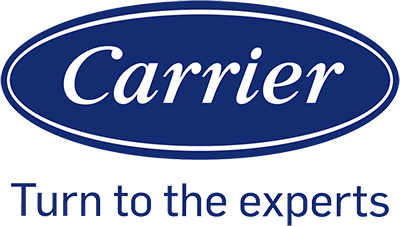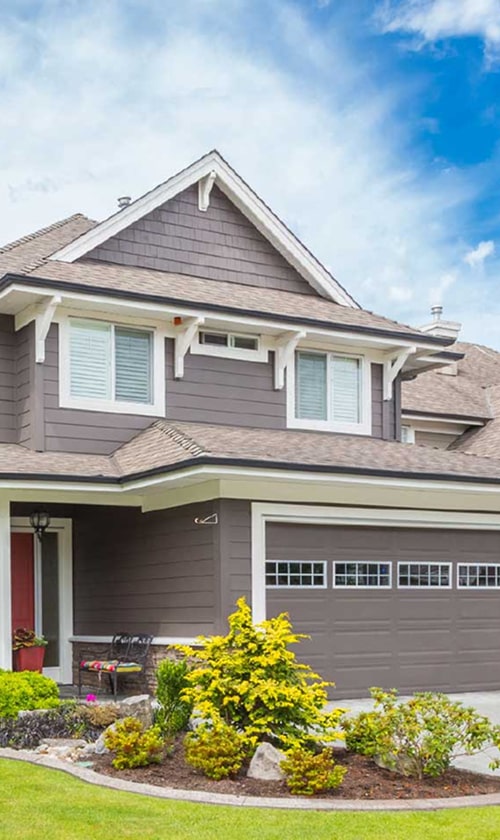Indoor air quality affects how we feel every day, yet many of us overlook the systems that keep it in check. Dust, allergens, and poor ventilation can build up if we don’t stay on top of basic care. Regular maintenance keeps indoor air quality systems working efficiently and helps reduce common problems like stale air, excess humidity, and hidden pollutants.

We can take simple steps to keep our systems running well, from changing filters on schedule to checking airflow throughout the home. These small actions prevent bigger issues and create a healthier living space. When we manage pollutants and balance humidity, we notice cleaner air and fewer irritants.
As technology improves, we also have options for advanced purification and upgrades that go beyond basic upkeep. By learning how to maintain what we already have and knowing when to improve it, we can make sure our indoor air stays fresh and safe year-round.
Essential Maintenance for Indoor Air Quality Systems
We can improve indoor air quality and keep our systems running efficiently by focusing on regular inspections, timely filter changes, clean air ducts, and seasonal care. These steps help extend equipment life, lower energy bills, and maintain a healthier environment.
Routine HVAC System Inspections
We should schedule HVAC system inspections at least twice a year. A trained technician can check refrigerant levels, inspect evaporator coils, and verify that the system runs at peak efficiency. Ignoring these checks may lead to higher energy bills and reduced comfort.
During inspections, technicians often test airflow, measure thermostat accuracy, and confirm that safety controls work properly. If we use a smart thermostat, they can also review settings to ensure the system adjusts efficiently during the cooling and heating seasons.
Key inspection points include:
- Refrigerant charge and leaks
- Evaporator and condenser coil condition
- Electrical connections and voltage
- Blower motor performance
- Thermostat calibration
Consistent inspections help us avoid costly repairs and keep both the air conditioner and heating system working when we need them most.
Filter Replacement and Upgrades
Filters protect HVAC systems and improve indoor air quality by trapping dust, pollen, and other particles. We should check filters monthly and replace them every 1–3 months depending on usage and filter type. Dirty filters restrict airflow, reduce efficiency, and strain the blower motor.
Upgrading to HEPA filters can remove smaller airborne particles, which is especially important for households with allergies or asthma. However, not all systems can handle HEPA filters, so we must confirm compatibility before installing them.
| Filter Type | Efficiency | Replacement Frequency |
|---|---|---|
| Standard Fiberglass | Low | 30 days |
| Pleated | Medium | 60–90 days |
| HEPA | High | 6–12 months* |
*Varies by system design.
By keeping filters clean and choosing the right type, we improve airflow, reduce wear on the system, and maintain better indoor air quality.
Air Duct Cleaning and Sealing
Air ducts carry conditioned air throughout the home. Dust, mold, or debris inside ducts can spread pollutants and reduce efficiency. We should consider professional duct cleaning if we notice visible mold, vermin, or heavy dust buildup. The National Air Duct Cleaners Association (NADCA) sets standards for proper cleaning practices.
Sealing ducts is just as important as cleaning. Leaks allow conditioned air to escape, which forces the HVAC system to work harder and increases energy bills. A technician can use mastic sealant or metal tape to close gaps and improve efficiency.
Benefits of duct cleaning and sealing:
- Better airflow and comfort
- Lower utility costs
- Reduced spread of dust and allergens
Clean and sealed ducts help us maintain consistent temperatures and healthier indoor air.
Seasonal Maintenance Practices
Seasonal maintenance keeps systems ready for both cooling and heating demands. In spring maintenance, we should clean evaporator coils, check refrigerant levels, and inspect the outdoor condenser before the cooling season begins. This helps the air conditioner run smoothly during hot months.
In fall maintenance, we should focus on the heating system. Tasks include inspecting burners, cleaning heat exchangers, and checking for carbon monoxide leaks. We should also test the thermostat to ensure accurate temperature control before winter.
Simple steps like clearing debris around outdoor units, replacing filters, and adjusting smart thermostat settings for seasonal schedules can also make a big difference.
By preparing our HVAC system before each season, we reduce the risk of breakdowns and keep energy use under control year-round.
Managing Pollutants and Allergen Sources
We can improve indoor air by limiting pollutants at the source, reducing fine particles like dust and pollen, and controlling moisture that leads to mold growth. Each step lowers exposure to allergens and helps air systems work more effectively.
Source Control Strategies
We lower indoor air pollution most effectively by removing or reducing pollutants before they spread. Common sources include paints, cleaning products, new building materials, and indoor smoking. Many of these release volatile organic compounds (VOCs) that linger in the air.
We should store chemicals in sealed containers and choose low-VOC or VOC-free paints and finishes. If smoking occurs indoors, it should stop immediately, as smoke releases fine particles and toxic gases that no filter can fully remove.
Some older homes may still contain asbestos in insulation or floor tiles. Disturbing these materials can release dangerous fibers, so we should avoid drilling or sanding them. Professional removal is the safest option if asbestos is present.
By addressing pollutants at their source, we reduce the burden on filters and ventilation systems. This makes the air cleaner and lowers long-term maintenance needs.
Reducing Dust and Particulate Matter
Dust, pollen, pet dander, and dust mites are common airborne pollutants that affect health and comfort. These particles, including PM2.5 fine particles, stay suspended in the air and settle on surfaces, making regular cleaning essential.
We should vacuum with a HEPA filter at least once a week. Standard vacuums often push fine dust back into the air, while HEPA models trap small particles effectively. Hard floors should be damp-mopped to prevent dust from resettling.
Using high-quality HVAC filters also helps capture airborne particles. Filters should be changed on schedule, usually every 2–3 months, depending on the environment. Air purifiers with HEPA filters add another layer of protection in bedrooms or living areas.
Simple steps like washing bedding weekly in hot water and grooming pets outdoors also reduce allergens. These actions limit buildup and help the system maintain good airflow.
Addressing Mold and Moisture Issues
Excess moisture indoors often leads to mold growth and the release of mold spores. Mold thrives in high humidity, damp basements, bathrooms, and around leaky plumbing. Once mold spreads, it can damage building materials and trigger allergies.
We should keep indoor humidity between 30–50%. Using a dehumidifier in damp areas and running exhaust fans in kitchens and bathrooms helps control moisture. Regularly checking for leaks in pipes, roofs, and windows prevents hidden water damage.
When mold appears on hard surfaces, cleaning with mild detergent and water usually works. For larger infestations or porous materials like drywall, professional remediation is often required.
Moisture control also protects against dust mites, which thrive in humid environments. By keeping humidity stable and surfaces dry, we reduce both mold and allergen risks at the same time.
Optimizing Ventilation, Humidity, and Airflow

We improve indoor air quality by balancing ventilation, controlling humidity, and maintaining steady air circulation. Each factor works together to reduce pollutants, limit moisture problems, and keep the air comfortable for daily living.
Improving Mechanical and Natural Ventilation
We rely on both mechanical and natural ventilation to keep fresh air moving indoors. Mechanical systems, such as exhaust fans in bathrooms and kitchens, remove moisture and odors at the source. A range hood above the stove also helps capture smoke and grease particles before they spread.
Natural ventilation uses windows, vents, and open doors to bring in outdoor air. Cross-ventilation works best when we open windows on opposite sides of a room, allowing air to flow through. This reduces the buildup of indoor pollutants and stale air.
Ventilation rate matters. If airflow is too low, pollutants linger; if too high, we waste energy. We should check that fans and vents are clean and not blocked. Regular filter changes in HVAC systems also help maintain proper airflow and reduce strain on equipment.
Humidity Control Techniques
Keeping the right humidity levels prevents mold growth, dust mites, and discomfort. Ideal indoor humidity ranges between 30% and 50%. Levels higher than this encourage dampness, while levels lower than this cause dry skin and irritated airways.
We use dehumidifiers in damp areas like basements to reduce excess moisture. Running exhaust fans during showers or cooking also helps lower humidity. In very humid climates, a whole-house dehumidifier may be needed.
In dry seasons, we may need a humidifier to add moisture. Portable units work for single rooms, while central humidifiers connect to the HVAC system for the entire home. We must clean humidifiers often to prevent bacteria or mold from growing inside the tank.
Monitoring humidity with a digital hygrometer helps us adjust devices as needed. This keeps levels steady throughout the year.
Enhancing Air Circulation
Good air circulation keeps temperatures even and reduces stagnant air. We can use ceiling fans to move air gently without creating drafts. Fans should rotate counterclockwise in summer for cooling and clockwise in winter to push warm air down.
We should avoid blocking vents with furniture or rugs. Clear pathways allow HVAC systems to distribute air evenly. In rooms with poor circulation, portable fans can help direct airflow.
Air circulation also benefits from regular maintenance. Changing HVAC filters every 1–3 months prevents clogs that restrict airflow. Keeping ducts sealed and clean ensures conditioned air reaches all areas of the home without leaks.
Advanced Air Purification and System Upgrades
We can improve indoor air quality by choosing the right purification equipment, upgrading system components, and using smart tools to track performance. These steps help us reduce harmful particles, gases, and allergens while keeping our systems efficient and reliable.
Selecting Air Purifiers and Cleaners
When we select air purifiers or air cleaners, we should match the device to the size of the room and the type of pollutants present. Portable units may work for bedrooms, while whole-home systems connect directly to our HVAC system.
Key features to compare:
- Filter type: HEPA filters capture fine particles like dust and pollen.
- Activated carbon: Helps reduce odors and gases from gas stoves or gas appliances.
- Noise level: Important for bedrooms or offices.
- Energy use: Lower energy models reduce long-term costs.
We should also consider whether the unit produces ozone. Some ionizers can release trace amounts, which may irritate lungs. Choosing models tested for low or no ozone output ensures safer use.
Upgrading Filtration and UV Systems
Replacing standard air filters with higher efficiency options improves system performance. A MERV 13 or higher filter can capture smaller particles, including some bacteria and smoke. We need to check that our HVAC system can handle the added resistance before upgrading.
Adding UV lights inside the ductwork or near the evaporator coil helps reduce mold and some airborne microbes. UV systems work best when paired with regular filter replacement since they do not remove dust or gases.
For homes with gas appliances, stronger filtration and UV upgrades can help reduce exposure to nitrogen dioxide and carbon monoxide. It is still essential that we use detectors for these gases, since filters alone cannot remove them.
Smart Monitoring and Maintenance Tools
Smart tools give us real-time data on air quality and system performance. A smart thermostat can adjust thermostat settings to improve airflow and energy use. Some models also track filter life and send alerts when replacements are due.
Indoor air quality monitors measure levels of particles, humidity, and gases. These tools help us see when pollutants rise from cooking, gas stoves, or outdoor air.
We can also use apps connected to our HVAC upgrades to schedule maintenance, track energy use, and spot issues early. This keeps our air purification systems working efficiently without guesswork.




